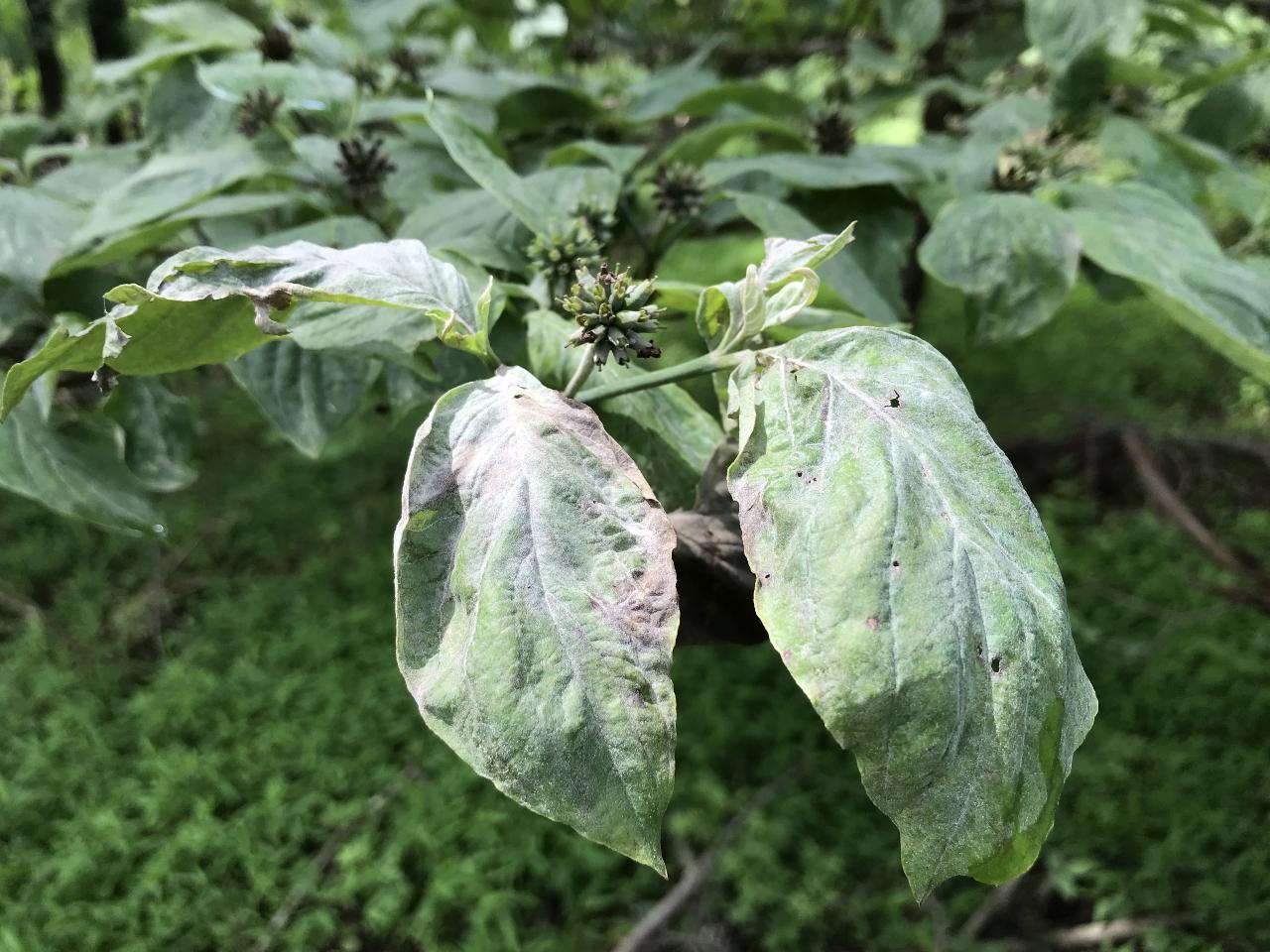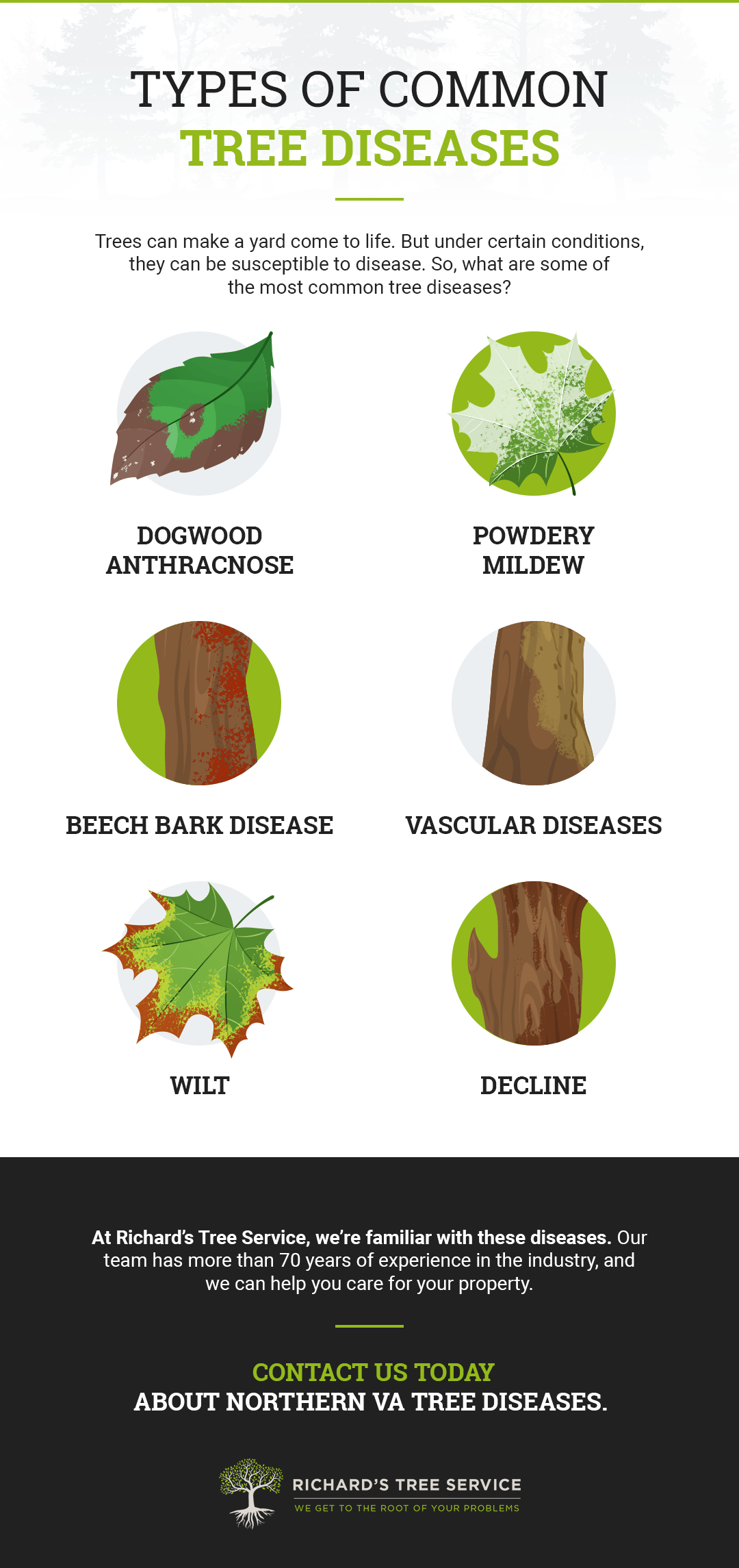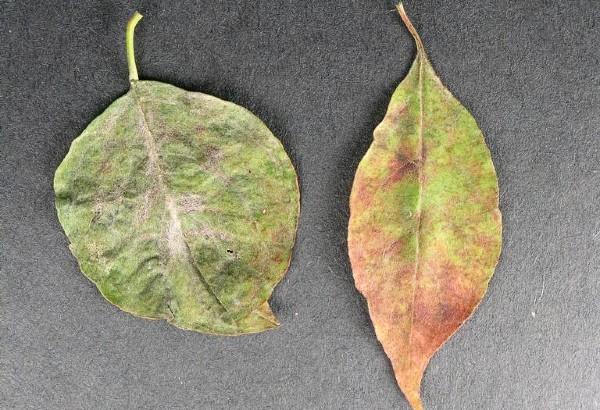
Common Dogwood Problems (Anthracnose, Powdery Mildew): Solutions & Tips
Anthracnose and powdery mildew are common dogwood problems. They cause leaf spots, wilting, and defoliation.
Dogwoods are popular ornamental trees known for their beautiful flowers and vibrant fall colors. Despite their beauty, these trees can suffer from various diseases. Anthracnose and powdery mildew are two prevalent issues that can significantly impact their health. Anthracnose causes dark, sunken spots on leaves and stems, leading to wilting and defoliation.
Powdery mildew appears as a white, powdery coating on leaves, stunting growth. These diseases can weaken the tree over time, making it more susceptible to other problems. Proper care, including regular pruning and appropriate watering, can help manage and prevent these diseases, ensuring your dogwood remains healthy and vibrant.

Credit: richardstreeservice.com
Dogwood Diseases Overview
Dogwoods are beautiful trees, but they face certain diseases. Two common problems are Anthracnose and Powdery Mildew. These diseases can harm your trees. Understanding the signs and impacts is crucial for tree health.
Signs Of Infection
Knowing the signs of infection helps in early disease detection.
- Anthracnose: Look for tan spots on leaves. These spots may have purple edges. Branches may die back, and leaves can drop early.
- Powdery Mildew: White, powdery spots on leaves are a key sign. Leaves may curl or become distorted.
Impact On Trees
Both diseases can severely affect tree health.
Anthracnose can cause:
- Leaf drop
- Branch dieback
- Overall tree decline
Powdery Mildew can lead to:
- Reduced photosynthesis
- Weakened tree structure
- Stunted growth
Regular monitoring and care can help manage these diseases. Ensure your dogwoods stay healthy and vibrant.

Credit: m.youtube.com
Anthracnose In Dogwoods
Dogwoods are beautiful trees but can suffer from various diseases. One of the most common issues is anthracnose. This fungal disease can harm the tree’s health and appearance.
Symptoms
Anthracnose shows several signs on dogwoods. Look for these symptoms:
- Dark, sunken spots on leaves
- Wilted or curled leaves
- Dieback of branches
- Defoliation in severe cases
These signs usually appear in spring and early summer. The spots often have a tan center and dark edges.
Spread And Risk Factors
Anthracnose spreads through spores. These spores travel via wind and rain. Several risk factors can increase the chance of infection:
- High humidity and wet weather
- Overcrowded planting areas
- Poor air circulation
- Infected plant debris
To prevent anthracnose, keep the area clean and dry. Prune trees to improve air flow. Remove and destroy any infected plant material.
| Symptom | Description |
|---|---|
| Dark Spots | Sunken, with tan centers and dark edges |
| Wilted Leaves | Leaves curl and appear wilted |
| Branch Dieback | Branches may die back from the tips |
| Defoliation | Leaves may fall off in severe cases |
Regular monitoring can help catch the disease early. Early detection makes it easier to manage and treat.
Managing Anthracnose
Anthracnose is a common fungal disease affecting Dogwood trees. It causes leaf spots, wilting, and dieback. Managing anthracnose is crucial for keeping your Dogwood trees healthy and vibrant. Below are some effective strategies to prevent and treat this disease.
Preventive Measures
Prevention is better than cure. Here are some ways to prevent anthracnose:
- Plant Resistant Varieties: Choose Dogwood varieties that are resistant to anthracnose.
- Proper Spacing: Ensure your trees have enough space for air circulation.
- Watering Technique: Water the base of the tree. Avoid wetting the leaves.
- Sanitation: Remove fallen leaves and branches. Clean up debris around the tree.
- Mulching: Apply mulch around the base to retain moisture and reduce soil splash.
Treatment Options
If your Dogwood tree shows signs of anthracnose, consider these treatment options:
- Fungicide Application: Use a recommended fungicide. Apply it in early spring.
- Pruning: Cut and remove affected branches. Dispose of them properly.
- Water Management: Ensure the tree gets enough water. Avoid over-watering.
- Nutrient Management: Provide balanced fertilizers to boost the tree’s health.
- Monitoring: Regularly inspect your Dogwood tree for early signs of disease.
Powdery Mildew In Dogwoods
Powdery mildew is a common fungal problem in dogwoods. This disease affects the leaves and stems, causing a white, powdery coating. It can weaken the tree and reduce its beauty. Understanding the symptoms and environmental factors helps in managing this issue effectively.
Symptoms
Powdery mildew manifests as a white or gray powder on dogwood leaves. This powder is usually found on the upper surface of the leaves. Over time, the leaves may curl, twist, or turn yellow. Severe infections can lead to leaf drop, reducing the tree’s overall health and vigor.
Environmental Factors
Several environmental factors contribute to the development of powdery mildew:
- Humidity: High humidity levels provide a conducive environment for the fungus.
- Temperature: Warm days and cool nights facilitate fungal growth.
- Air Circulation: Poor air circulation around the tree increases the risk of infection.
Ensuring proper spacing between plants and pruning can improve air circulation. Watering the base of the tree instead of the leaves also helps reduce humidity around the foliage.
| Factor | Impact |
|---|---|
| Humidity | High humidity promotes fungal growth. |
| Temperature | Warm days and cool nights increase risk. |
| Air Circulation | Poor circulation raises infection chances. |
By addressing these environmental factors, the risk of powdery mildew can be minimized, ensuring your dogwoods remain healthy and vibrant.
Controlling Powdery Mildew
Powdery mildew is a common fungal disease affecting dogwoods. It appears as a white, powdery coating on leaves, stems, and buds. This disease can weaken the plant, making it more susceptible to other problems. Understanding how to control powdery mildew is crucial for maintaining the health of your dogwood trees.
Preventive Strategies
Preventing powdery mildew involves a few simple steps:
- Proper Spacing: Ensure enough space between plants for air circulation.
- Watering: Water at the base to keep foliage dry.
- Sunlight: Plant dogwoods in areas with good sun exposure.
- Pruning: Regularly prune to remove infected parts and improve airflow.
Effective Treatments
If powdery mildew appears, consider these treatments:
- Fungicides: Use fungicides labeled for powdery mildew.
- Neem Oil: Apply neem oil to infected areas.
- Baking Soda Solution: Mix 1 teaspoon of baking soda in 1 quart of water. Spray on affected leaves.
- Milk Spray: Use a mix of 1 part milk to 2 parts water. Spray weekly.
| Method | Frequency |
|---|---|
| Fungicides | As directed |
| Neem Oil | Weekly |
| Baking Soda Solution | Weekly |
| Milk Spray | Weekly |
By following these steps, you can control powdery mildew and keep your dogwood trees healthy and vibrant.
Integrated Pest Management
Integrated Pest Management (IPM) is a smart approach to control dogwood problems. It combines different methods for better results. IPM reduces the need for chemical pesticides. This makes it eco-friendly and safe for pets and humans. Let’s explore some effective strategies for managing common dogwood issues like Anthracnose and Powdery Mildew.
Combining Methods
IPM involves using a mix of techniques. Here are some key methods:
- Biological Control: Use natural predators or parasites. These can help reduce pest populations.
- Cultural Practices: Maintain healthy plants by proper watering and pruning. This reduces stress on the dogwoods.
- Mechanical Control: Remove infected leaves and branches. Dispose of them properly to prevent spread.
- Chemical Control: Use fungicides as a last resort. Always follow label directions.
Long-term Solutions
Long-term strategies ensure lasting health for your dogwoods. Here are some tips:
- Choose Resistant Varieties: Some dogwood species are resistant to diseases. Plant these to reduce problems.
- Improve Soil Health: Healthy soil supports strong plants. Add compost and mulch to enrich soil.
- Regular Monitoring: Inspect your dogwoods regularly for signs of disease. Early detection helps manage issues effectively.
- Proper Spacing: Space plants adequately to ensure good air circulation. This reduces the risk of fungal infections.
Implementing IPM can save your dogwoods from common problems. It ensures healthier and more beautiful plants.
Promoting Tree Health
Healthy Dogwood trees are less likely to suffer from diseases like Anthracnose and Powdery Mildew. By focusing on proper care, you can ensure your tree thrives. Here are some essential tips for promoting tree health.
Proper Watering
Watering Dogwood trees correctly is vital. Avoid both over-watering and under-watering. Young trees need more water than mature ones. Water the tree deeply, reaching the root zone. This helps the roots grow strong and healthy.
- Water deeply once a week.
- Use a soaker hose for even distribution.
- Avoid wetting the leaves to prevent diseases.
Optimal Soil Conditions
Dogwood trees prefer well-drained, acidic soil. Testing the soil pH can help you maintain the best conditions.
| Soil Condition | Optimal Range |
|---|---|
| pH Level | 5.5 to 6.5 |
| Drainage | Good drainage |
Amend the soil with organic matter if needed. Compost and leaf mold improve soil quality. Mulching around the tree base helps retain moisture. It also suppresses weed growth.
- Test soil pH annually.
- Use organic matter to improve soil.
- Mulch to retain moisture and reduce weeds.

Credit: extension.umd.edu
Seasonal Care Tips
Dogwood trees can face issues like Anthracnose and Powdery Mildew. Proper care throughout the seasons helps maintain their health. Follow these seasonal tips to keep your Dogwood thriving.
Spring And Summer
In spring, inspect your Dogwood for any signs of Anthracnose. Look for dark, sunken spots on leaves and stems. Remove infected leaves to prevent the spread of the disease.
Water your Dogwood deeply but avoid overwatering. Watering early in the morning helps reduce the risk of Powdery Mildew. Ensure good air circulation by pruning overcrowded branches.
Apply a layer of mulch around the base to retain moisture. Mulch also helps keep weeds away. Fertilize your Dogwood with a balanced fertilizer to promote healthy growth.
Fall And Winter
In fall, keep an eye out for fallen leaves affected by Anthracnose. Rake and dispose of these leaves to prevent overwintering of the fungus.
Prune your Dogwood to remove dead or diseased branches. Pruning helps improve air circulation and light penetration. Avoid heavy pruning as it can stress the tree.
As winter approaches, protect your Dogwood from harsh winds. Wrap the trunk with burlap or tree wrap. This helps prevent winter damage and reduces the risk of disease.
Frequently Asked Questions
How Do You Get Rid Of Powdery Mildew On Dogwoods?
To get rid of powdery mildew on dogwoods, prune infected branches. Apply fungicide. Ensure good air circulation. Water at the base. Maintain plant health.
How Do You Get Rid Of Dogwood Anthracnose?
Remove infected leaves and branches. Apply fungicide in spring and fall. Ensure proper spacing for air circulation. Water the base, not leaves. Maintain tree health with regular care.
What Does Anthracnose Look Like On Dogwood?
Anthracnose on dogwood appears as tan or brown spots on leaves. Twigs and branches may have cankers. Leaves may also curl and drop prematurely.
Can Dogwood Survive Anthracnose?
Yes, dogwood can survive anthracnose. Early detection and treatment improve chances. Prune infected branches and apply fungicides. Ensure proper watering and sunlight.
Conclusion
Addressing common dogwood problems like anthracnose and powdery mildew ensures your tree stays healthy. Regular monitoring and proper care are essential. By following expert advice, you can prevent these issues. Keep your dogwood thriving with consistent maintenance. Healthy trees enhance your garden’s beauty and longevity.

